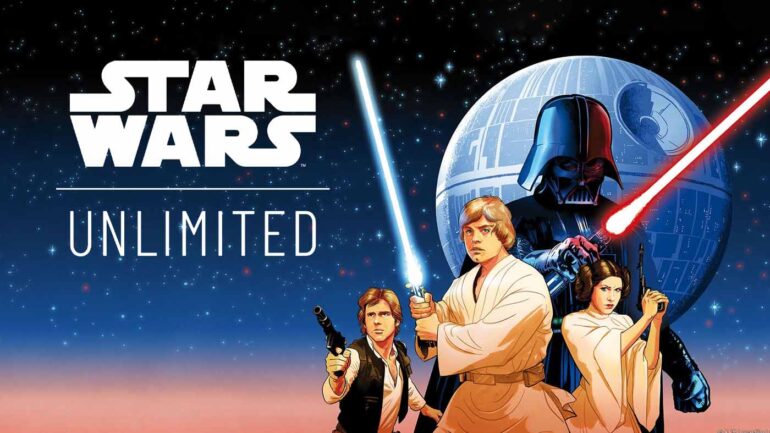After a break of nearly two decades, the last year or two has been something of a return for me to the world of trading/deck building card games. Primarily that’s been by way of Magic: The Gathering, the same game I was playing back in high school, but the more I see of other titles the more that the fever for slapping expensive bits of cardboard down on a drink-stained table at my local tabletop bar grips me.
To that end, I’ve spent the past couple of weeks checking out Star Wars Unlimited, a new game based on the iconic franchise that brings some interesting ideas to the table and could well be greater than just the IP legacy it carries.
Almost immediately after unboxing and beginning to pore over Star Wars Unlimited’s very straightforward two-player starter kit, which contains two pre-built decks along with two printed play sheets, cardboard tokens and a quick start guide, the similarities to MtG were clear and comforting. The standard format sees two players go head-to-head, filling their sides with units to attack and defend and competing to deplete their opponent’s life pool.
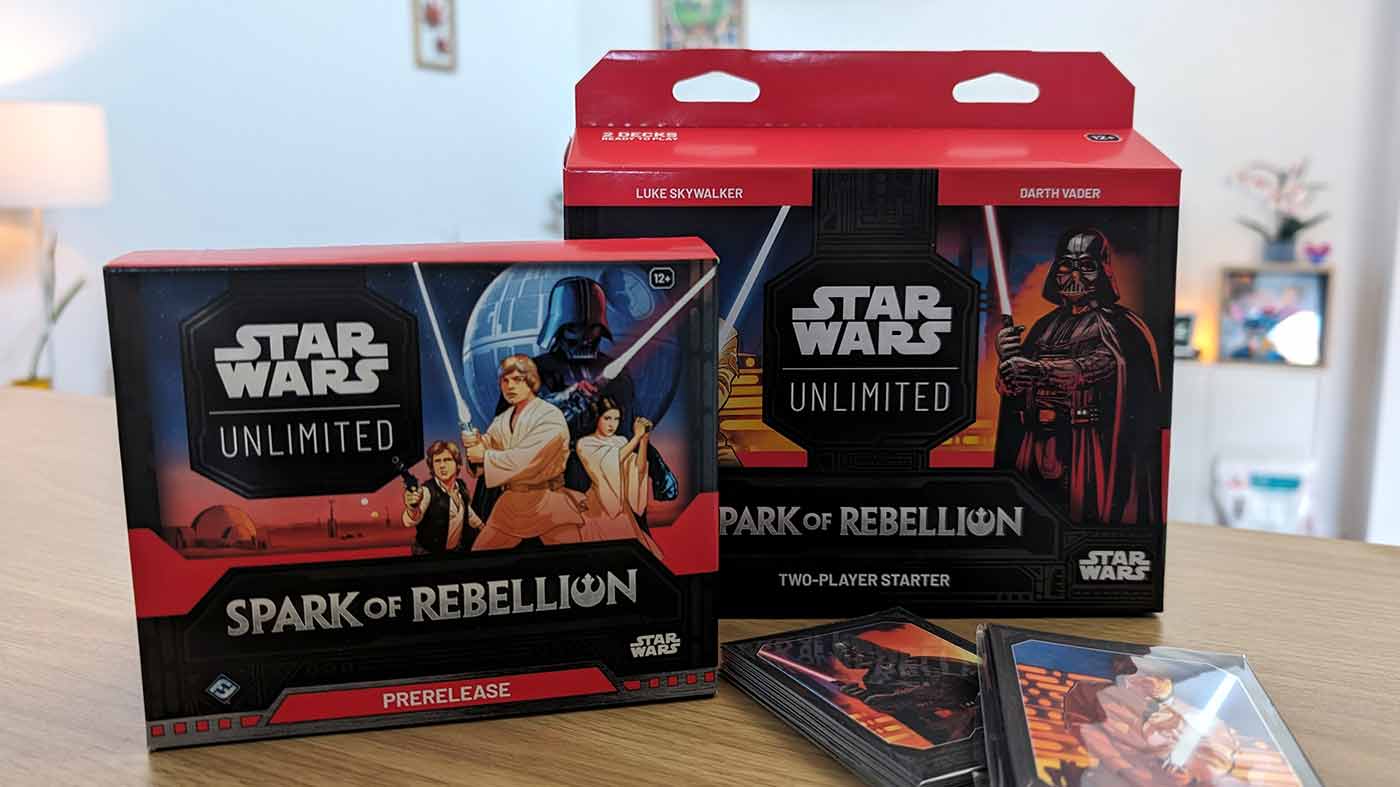
Of course, being a Star Wars game means everything is very much themed around the ideas of space and planetary warfare inherent to the franchise, and so the layout of the table has a few neat quirks. Units, your permanent attacking and defending cards, are played in one of two areas depending on whether they’re ground (like humans, aliens, land vehicles and so on) or space-based (like ships). These two sections typically don’t interact, so ground units can only target ground units, and similarly in space, though both are able to attack the opponent’s life pool which is represented by a Base card.
Each side also has a Leader card, which is the star of their particular deck and would typically be chosen for its synergy with the rest of their cards, much like a Commander in that format of MtG. The starter kit currently available is based on the iconic clashing of Luke Skywalker and Darth Vader, with each starring in their own themed deck.
Aside from the split fields of battle, the geography of the table will be pretty easy to navigate for anyone that’s played similar games, especially MtG (sorry, it’s the best point of reference I have). You’ve got your deck, your discard pile, spots for your base and leader, and an area to pool your “resources” which are this game’s version of mana or similar and used as payment to play cards.
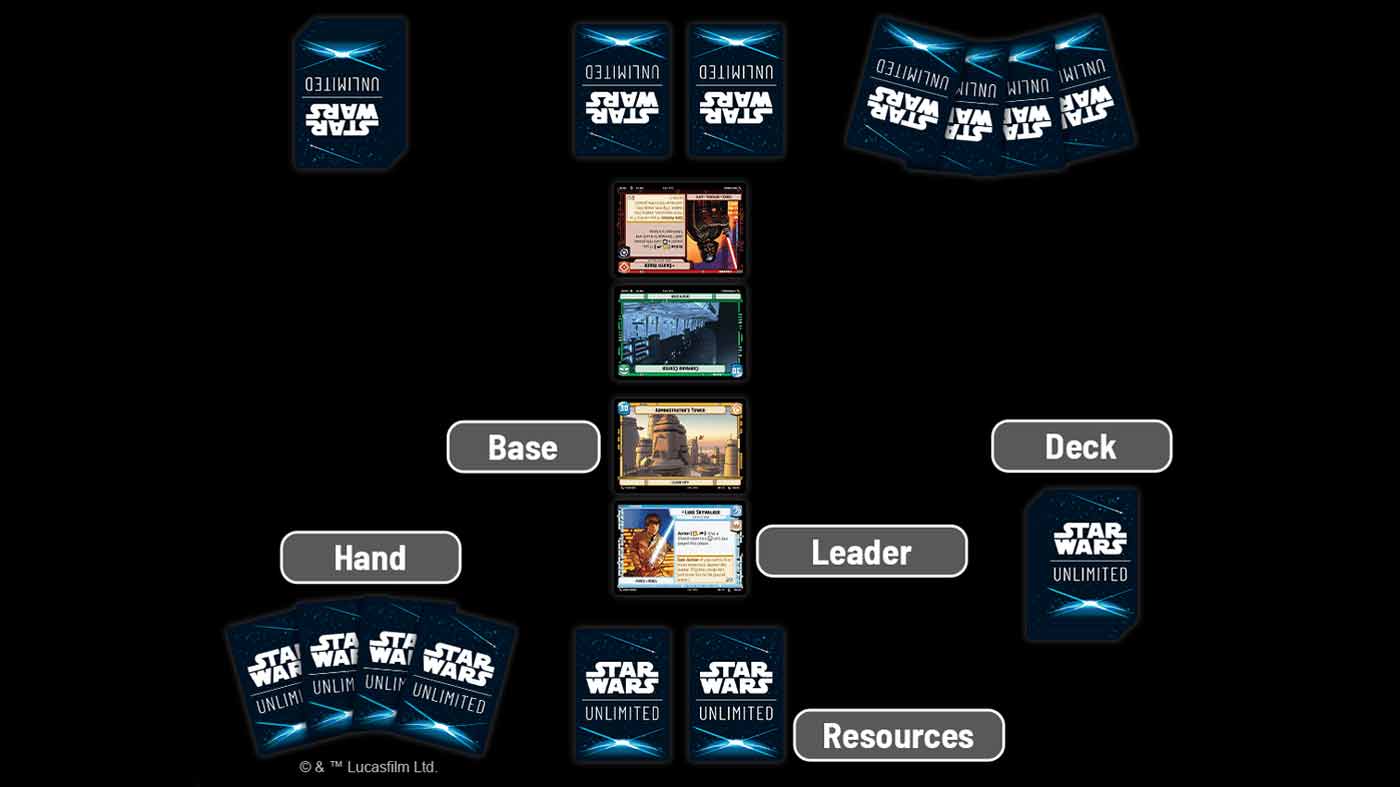
Where this game almost immediately sets itself apart though, is in both the structure of turns and how those resources are accrued. Turns are split into two phases, but rather than going player-by-player, both combatants share these phases. The first is pretty much an upkeep phase, giving players the opportunity to draw cards, ready up any they’d exhausted the previous turn and contribute resources. Interestingly, unlike something like MtG’s “lands,” SWU doesn’t have dedicated resource cards. Instead, any card in your hand can be a resource if you’re willing to give it up, which adds a nice extra bit of decision-making and can also alleviate the pain of a bad draw by giving every card an alternative utility.
The second phase, dubbed the Action Phase, is similarly a nice spin on what you’d expect. Rather than each player getting the opportunity to perform a series of actions before handing over control to their opponent, every individual action happens one at a time. Whether it’s playing a card, attacking with a unit or using a card ability, you and your opponent take turns during this phase to do just one thing. Then, once both players both decide to pass it’s back to everyone drawing and resetting the table.
Initiative in the action phase is decided by whichever player is holding an Initiative Token, and this can be taken by the opposing player during the Action Phase but does count as an action and can mean the end of the current phase. This all makes for a much faster-feeling and more reactive game, where players can rebut their rival’s moves in almost real-time and strategies are formed on the fly rather than pre-determined and pending the luck of the draw.
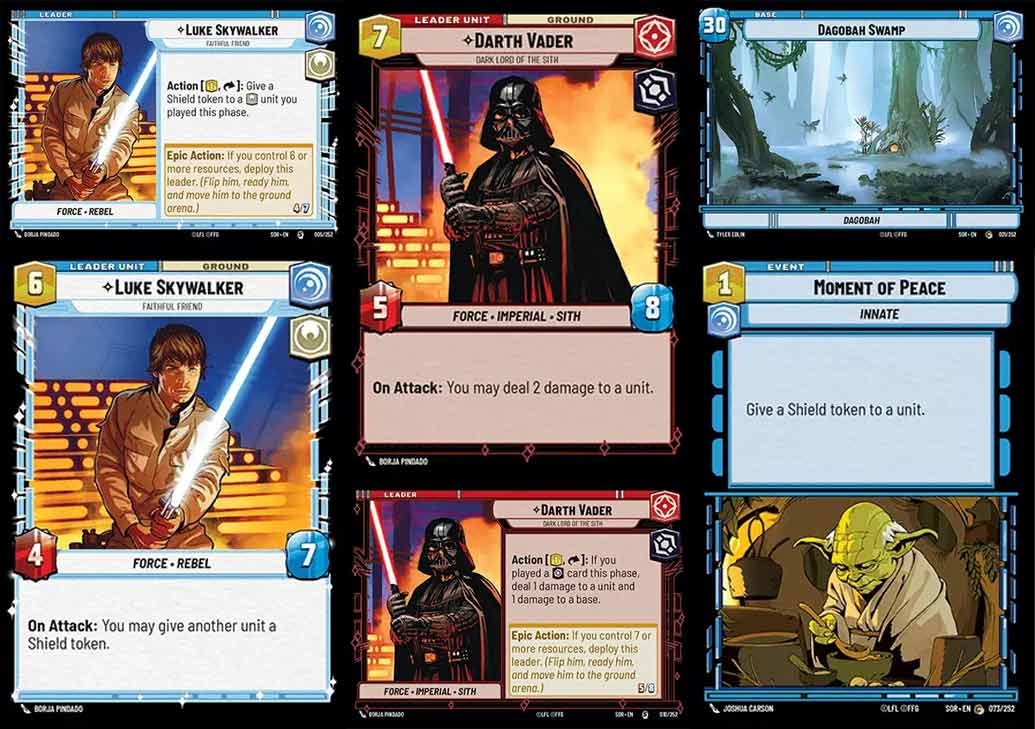
Because you’re still working with a limited resource pool, and because most units come into battle already “exhausted” (see: tapped) these action phases don’t last overly long, usually a handful of actions at most, so re-grouping and resetting happens nice and often and neither player really experiences any downtime. With the standard life pool set at 30, most games I’ve played seemed to run about as long as similar games, around the 30 minute range depending on how spectacularly I would lose.
Aside from unit cards, which live in either the ground or space zones and have their own power and health stats to dictate how much damage they can dish out or take, there are also things like “Events” which give one-off effects and Upgrades that attach to unit cards for buffs and added effects, as well as the aforementioned Leader card. Leaders are interesting because they start the battle in play in a limited capacity, offering some kind of passive or activated effect while they’re in their initial place on the board but then become a unit in their own right once the controlling player owns enough resources. While you don’t need to pay said resources, locking the Leader behind a threshold is a good way to encourage players to either continue to resource their cards, or risk stifling themselves to keep their Leader safely tucked away for later use.
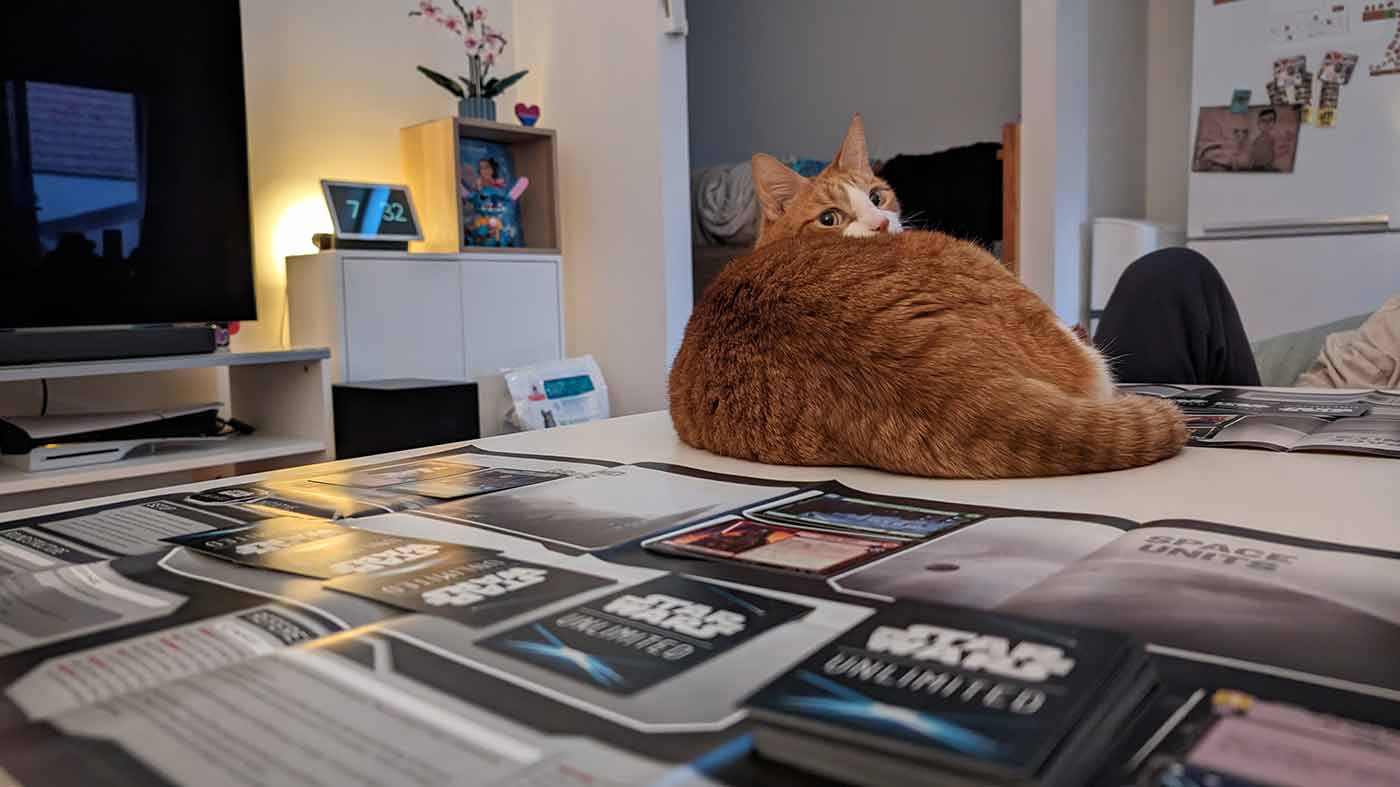
Like any of these games, learning Star Wars Unlimited means not just figuring out the order of things but getting to know the terminology and mechanics you’ll be seeing on the cards themselves. Right from my very first game, everything felt pretty straightforward just from the text on the actual cards with little need to consult the quick start guide outside of checking overall rules, though getting a read on essential information like unit types or alignments at a glance can sometimes be a challenge with some things printed quite small. It’s the kind of thing that’ll be mitigated as you become more familiar with every card in your deck but it may be an initial hurdle for some.
Outside of actual play, there’s naturally a decent amount of appeal in a game like this for collectors, given the IP it’s based on. To that end, the cards here are quite nice, featuring some great art from a variety of fantastic artists depicting fan-favourite characters, locations, stories and scenes. Things like card backs, borders, text boxes and such are about what you’d expect from a science fiction-tinted product and, although there are some of the usual rare card treatments to be found, I wouldn’t say they’re anything particularly special overall. I’d love to see these card designs evolve over time to be a bit more bold and unique, and a touch more readable, but they’re mostly pretty good.
All told, Star Wars Unlimited is a decent early effort that offers up a unique-feeling game that’s easy enough to pick up and feels fast and reactive to play, with cards that look good and should appeal nicely to collectors and fans. The starter kit is decent value and depicts an iconic rivalry, so whether you’re looking to take first steps into the game or just want something new to learn and play casually it’s a great way to start.


